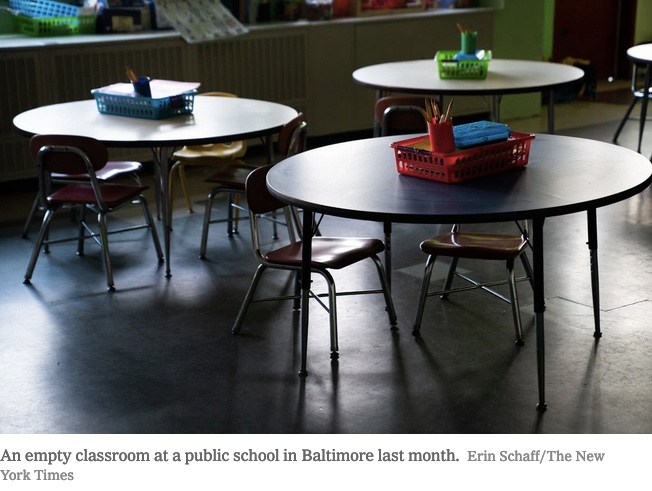WASHINGTON — Education Secretary Betsy DeVos, defiant amid criticism that she is using the coronavirus to pursue a long-sought agenda, said she would force public school districts to spend a large portion of federal rescue funding on private school students, regardless of income.
Ms. DeVos announced the measure in a letter to the Council of Chief State School Officers, which represents state education chiefs, defending her position on how education funding from the Coronavirus Aid, Relief and Economic Security Act, or CARES Act, should be spent.
“The CARES Act is a special, pandemic-related appropriation to benefit all American students, teachers and families,” she wrote in the letter on Friday. “There is nothing in the act suggesting Congress intended to discriminate between children based on public or nonpublic school attendance, as you seem to do. The virus affects everyone.”
A range of education officials say Ms. DeVos’s guidance would divert millions of dollars from disadvantaged students and force districts starved of tax revenues during an economic crisis to support even the wealthiest private schools. The association representing the nation’s schools superintendents told districts to ignore the guidance, and at least two states — Indiana and Maine — said they would.
Ms. DeVos accused the state education chiefs of having a “reflex to share as little as possible with students and teachers outside of their control,” and said she would draft a rule codifying her position to “resolve any issues in plenty of time for the next school year.” The proposed rule would need to go through a public comment process before it could take effect.
Private school leaders, who serve about 5.7 million of the nation’s children, say they, too, are in crisis. Enrollment and tuition revenues are plunging along with philanthropic donations and church collections that help some religious schools operate. Many of those schools serve low-income students whose parents have fled failing public schools. Private school groups say 30 percent of the families they serve have annual incomes below $75,000, and those families are most at-risk without federal aid.




